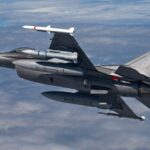
The Air Force must shun traditional acquisition timelines in favor of agile acquisition approaches using experimentation and prototyping if it wants to dominate the skies in 2030 and beyond, according to a report released Tuesday.In the Air Superiority 2030 Flight Plan, chartered by outgoing Chief of Staff Gen. Mark Welsh, the Air Force said the rapidly changing operational environment means the service can no longer afford to develop weapon systems on the linear acquisition and development timelines using traditional approaches.…













